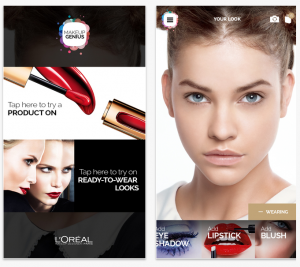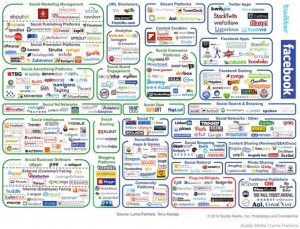What happens when your role is the same as your target customer’s? Columnist Scott Vaughan shares insights into how to use this situation to your advantage.

The CMO role and marketing’s revenue influence have never been greater. There’s a seemingly endless number of ways to engage with prospects, customers and stakeholders, an abundance of data at our fingertips, and ever-improving technology to make us smarter and faster. It’s an exciting time to be a marketing leader.
But what if you’re a CMO of a company whose target audiences are marketers — leaders and practitioners who know your craft? With the parallel role you have, the expectations and scrutiny rise to another level. It’s like you’re in a fishbowl and everybody is looking at what you’re doing, how you’re doing it, what strategies you’re using and the tactics you’re deploying. Fun!
While I’m writing this in the context of a CMO serving other marketers, the same is true anytime your role is similar to those of your target customers. Here are a few ways I’ve learned to turn this unique position into an advantage for you, your prospects and customers.
Your customer empathy is high: Use it
Let’s start with the huge advantage: You’re the target audience, and you can connect with your customers at extraordinary levels. You know what it feels like to be a marketer — the big revenue targets that hang over your head, the customer experience perfection expected, the digital media, technology and data-mining skills required and all the talent needed for modern marketing.
You understand all the nuances of the discipline; this is a huge enabler, helping you ensure the precision of your persona creation, value props, messaging, channels strategies and engagement tactics.
However, all this inside knowledge doesn’t mean you can neglect going out in the field and interacting with prospects and customers.
Personal experience: Don’t always trust it
There’s no doubt that advantages exist because of empathy. You can often skip a few steps. “Not so fast,” Joe Chernov, CMO of InsightSquared and former marketing leader at industry juggernauts HubSpot and Eloqua, told me in an interview. “The good news is you have a reliable focus group of one where you are the target persona or ICP (ideal customer profile). It’s much easier and convenient to trust your instinct. While it’s often a good litmus test, you must constantly remind yourself that it’s a first check. It’s rarely what’s required to do your best work.”
Chernov more realistically advises, “You have to actively remember that there is a difference between my opinions and the facts. Your ‘self-monitoring’ capability has to be really high or you run the risk of attaching too much confidence [to] your opinion.”
This applies to everything from the solutions you develop to whom you target to the messaging and channels you use to engage and communicate. The lesson here is, don’t assume or take anything for granted. Always do the research, test ideas and make the effort to know your ideal customer and what motivates them.
Drinking your own champagne is a must
The first question almost always asked is: Do you use your own solution? Fair question. There’s no doubt you must drink your own champagne. You’re your best use case and can show others the way to derive the most value.
However, marketing is best executed based on your business model, target markets and go-to-market strategy. These elements don’t always align with every customer.
For example, in my current role as CMO of Integrate, our solution targets enterprise and mid-market marketing organizations that require automation to efficiently scale sales pipeline. Today, we’re an emerging upstart (smaller than our target customers), so we can’t fully exploit every facet of our solution. My colleague, Kate Athmer, who leads our demand marketing effort, put it succinctly: “The pressure to drink your own champagne is real, even if it doesn’t always make sense for your business.”
This adds urgency to participate in every aspect of how your company’s solution is communicated, delivered and used. This means your purview must expand beyond marketing to helping with the training guides, tutorials, service delivery offerings and so on. To do this, you must be in touch and in the field working with customers and partners, as a regular practice. The upside? “You can steal great ideas from customers!” Athmer emphasized.
Everybody is an expert, so a thick skin is required
This deep immersion is easier said than done. Because you work in the industry (marketing in this case), everybody at your company believes they’re “experts.” When your job is your customer’s role, the customers may relish your guidance, but there are realities you must navigate with your colleagues.
Chernov put it this way, “Everybody is an expert — just ask them. Your colleagues think they know more about your job than you know about theirs. Intentionally or not, they are meddlesome and often assume it’s much easier to do than it is. In reality, they have a surface-level understanding. This is a tricky navigation.”
It’s important to get and keep them involved, Chernov shared, “but don’t get overly swayed by their input. I have found it’s best to have thick skin, keep a high-level of self-awareness, and always right-size input when it comes to domain knowledge in the industry you are serving.”
Relish and embrace being in the spotlight
Because you share a common role, your customers often come to you for advice. This ability to be involved in prospect, customer and partner meetings as an adviser is invaluable in shaping your strategy and game plan as a marketer. It also adds huge value to customer trust and relationships for the business.
But be careful what you wish for! This can consume a huge chunk of time and have unintended consequences. This extra effort rarely gets more efficient, so it’s important to build this into your budget and go-to-market plan.
Filling many different roles in sales, marketing, product and services — and offering my company’s products to literally every type of B2B professional in my career — I can confidently say the advantages outweigh the disadvantages when it comes to being in a similar role as your target customer. The unique intimacy, empathy and understanding provide opportunities to contribute even more to the business. You just need to make sure you build this into your plan, budget and internal working relationships.
Opinions expressed in this article are those of the guest author and not necessarily Marketing Land. Staff authors are listed here.
Marketing Land – Internet Marketing News, Strategies & Tips
(42)
Report Post





